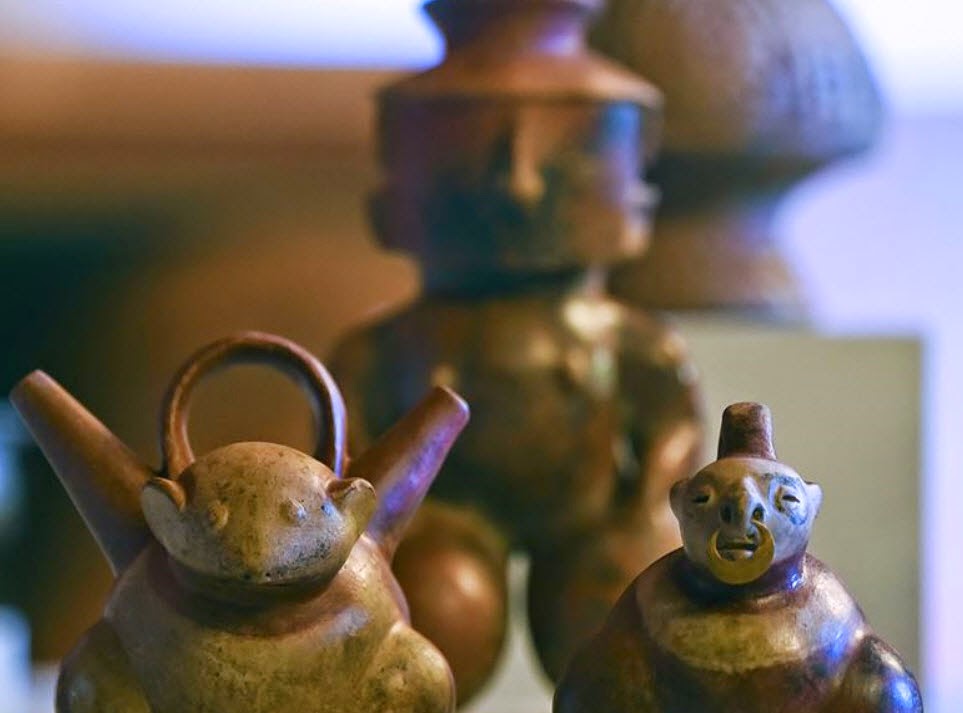The Codex will remain on public view at the Museo Nacional de Antropologia in Mexico City until January 11, 2015 as part of the exhibition Códices de México, Memorias y Saberes. The Codex takes its place among the most important archives in the Biblioteca Nacional de Antropología e Historia and in the future will be made available for further study by scholars.
Steven Murphy, Christie’s Chief Executive Officer, commented: “This is a superb outcome and we are proud to have assisted in securing the long term future of this important historic manuscript. Christie’s welcomes the opportunity to discuss matters relating to cultural property and while this is often a highly complex area, we have successfully found solutions which have resulted in the return of important objects. We are working increasingly regularly with clients, cultural organizations and governments on such matters.”
INAH (Instituto Nacional de Antropología e Historia) contacted Christie’s in May of this year, prior to the London auction in which the Codex was originally consigned, to make a private offer. The manuscripts had been long part of the archives of the British and Foreign Bible Society who were very supportive in helping facilitate the return of this historic object to Mexico. The negotiations were coordinated by Martin Wilson, Chairman of Christie’s Cultural Property Committee, Gabriela Lobo, Christie’s Managing Director in Mexico, and Margaret Ford, Christie’s International Head of Books.
The manuscripts contain largely unpublished, original indigenous accounts written in the hands of two of the great figures of the time – Chimalpahin Cuauhtlehuanitzin (also known as “runs Swiftly with a Shield / Rises Like an Eagle”) and Fernando de Alva Ixtlixochitl – concerning native life, society and politics in pre-Hispanic and 16th century New Spain. Written in Nahuatl (Aztec) and Spanish, they were part of the famed library of Don Carlos Sigüenza y Góngora, historian, poet and cartographer and one of the first great intellectuals born in the Spanish viceroyalty of New Spain.
The Codex Chimalpahin was officially welcomed back to Mexico as part of a ceremony on September 17 that also celebrated the 75th anniversary of the INAH and the 50th anniversary of the Museo Nacional de Antropología. The ceremony, which included an unveiling and celebration of the Codex’s return, was attended by public officials representing the President of the Republic. The acquisition increases Mexican bibliographic heritage and represents the first repatriation of a founding document of the nation.
http://artdaily.com/news/72958/Manuscript-detailing-early-history-of-Aztec-nation-makes-a-celebrated-return-to-Mexico#.VF01Of50zVk
2. BOGOTA (AFP).- Spain on Monday returned to Colombia a huge and priceless find -- almost 700 pieces of pre-Columbian art that Spanish authorities siezed in over a decade ago in a drug bust. The
catalogue of museum-worthy artefacts includes vases decorated with human faces, ceramic bowls decorated with geometric designs in ochre tones, musical instruments, necklaces and even small figures of people -- dating from 1400 BC up to the 16th century.
"Recovering for our nation these 691 archaeological treasures has a value that is really difficult to put any price on. They are from many of our (indigenous) cultures, and getting them home took years," Foreign Minister Maria Angela Holguin said at a briefing, presenting 50 of the remarkable pieces.
The artefacts -- from Calima, Narino, San Agustin, Quimbaya, Sinu and other groups -- had been spirited out of Colombia in 2001 before being seized from drug traffickers by Spanish authorities in 2003.
http://artdaily.com/news/72562/Spain-returns-priceless-trove-of-pre-Columbian-art-to-Colombia-#.VF1Tdv50zVk











No comments:
Post a Comment